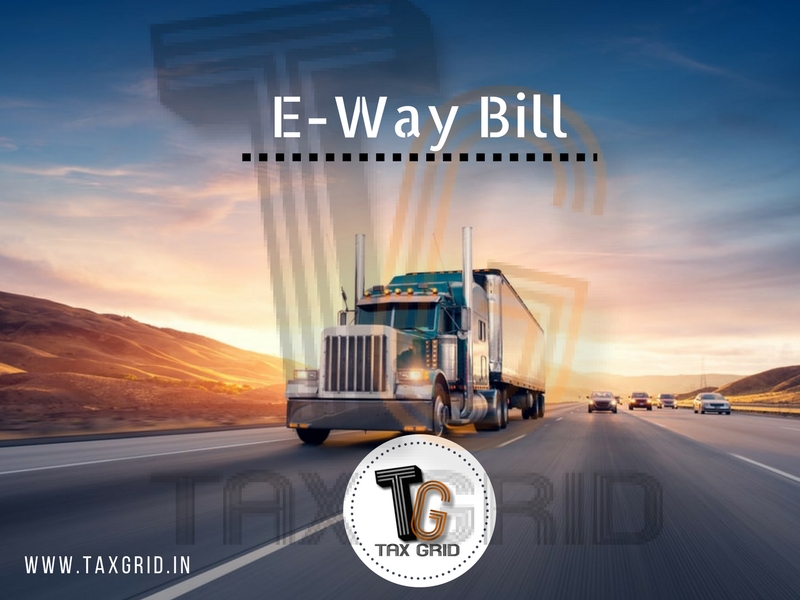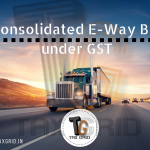FAQ’s on Electronic Way Bill

Frequently Asked Questions (FAQs) on e-way bill
1. What is an e-way bill?
e-way bill is a document required to be carried by a person in charge of the conveyance carrying any consignment of goods of value exceeding fifty thousand rupees as mandated by the Government in terms of section 68 of the Goods and Services Tax Act read with rule 138 of the rules framed thereunder. It is generated from the GST Common Portal by the registered persons or transporters who causes movement of goods on consignment before the commencement of such movement.
2. Why is the e-way bill required?
Section 68 of the Goods and Services Tax Act mandates that the Government may require the person in charge of a conveyance carrying any consignment of goods of value exceeding such amount as may be specified to carry with him such documents and such devices as may be prescribed. Rule 138 of Goods and Services Tax Rules, 2017 prescribes e-way bill as the document to be carried for the consignment of goods of value more than rupees fifty thousand. The government has issued a notification under rule 138 of Goods and Services Tax Rules, 2017 mandating to carry e-way bill for transportation of goods of consignment of value more than rupees fifty thousand. Hence e-way bill generated from the common portal is required to be carried.
3. Who all can generate the e-way bill?
Every registered person who causes movement of goods of consignment value exceeding fifty thousand rupees in relation to supply; or reasons other than supply; or inward supply from the unregistered person shall generate an e-way bill. It means, the consignor or consignee, as a registered person or a transporter of the goods can generate the e-way bill. The unregistered transporter can enroll on the common portal and generate the e-way bill for movement of goods for his clients. Any person can also enroll and generate the e-way bill for movement of goods for his/her own use.
4. Who all can update the vehicle number for the e-way bill?
The e-way bill is not valid without the vehicle number updated on the common portal, if on the mode of transport is the road. The Vehicle number can be updated by the generator of the e-way bill or the transporter assigned for that e-way bill by the generator.
5. What are pre-requisites to generate the e-way bill?
To generate the e-way bill, it is essential that the person shall be registered person and if the transporter is not registered person it is mandatory to get enrolled on the common portal of e-waybill before generation of the e- way bill. The documents such as tax invoice or bill of sale or delivery challan and Transporter’s Id, who is transporting the goods with transporter document number or the vehicle number in which the goods are transported.
6. If there is a mistake or wrong entry in the e-way bill, what has to be done?
If there is mistake, incorrect or wrong entry in the e-way bill, then it cannot be edited or corrected.
7. Whether the e-way bill can be cancelled? if yes, under what circumstances?
Yes. e-way bill can be cancelled if either goods are not transported or are not transported as per the details furnished in the e-way bill. e-way bill can be cancelled within 24 hours from the time of generation.
8.If the vehicle in which goods are being transported having e-way bill is changed, then what has to be done?
The e-way bill for transportation of goods always should have the vehicle number that is actually carrying the goods. There may be requirement to change the vehicle number after generating the e-way bill or after commencement of movement of goods due to transshipment or due to breakdown of vehicle. In such cases, the transporter or generator of the e-way bill can update the changed vehicle number.
9. Why does the transporter need to enroll on the e-way bill system?
There may be some transporters, who are not registered under the Goods and Services Tax Act and if such transporters cause the movement of goods for their clients, they are required to generate the e-way bill on behalf of their clientsf or update the vehicle number for e-way bill. Hence, they need to enroll on the e-way bill portal and
generate the 15 digits Unique Transporter Id.
10. Can I transport the goods with the e-way bill without vehicle details in it?
No. One needs to transport the goods with a e-way bill specifying the vehicle number, which is a carrying the goods. However, where the goods are transported for a distance of less than ten kilometers within the State from the place of business of consignor to the place of transporter for further transportation, then the vehicle number is a not
mandatory.
11. Whether the e-way bill is required for all the goods that are being transported?
The e-way bill is required to transport all the taxable goods with the value exceeding fifty thousand rupees except 154 goods specified in Annexure to the notification.
12. What is the consolidated e-way bill?
Consolidated e-way bill is a document containing the multiple e-way bills for multiple consignments being carried in one conveyance (goods vehicle). That is, the transporter, carrying the multiple consignments of various consignors and consignees in one vehicle is required to carry one consolidated e-way bill instead of carrying multiple e-way bills
for those consignments.
13. Who can generate the consolidated e-way bill?
A transporter can generate the consolidated e-way bills for movement of multiple consignments in one vehicle.
14. Can the e-way bill be deleted or cancelled?
The e-way bill once generated cannot be deleted. However, it can be cancelled by the generator within 24 hours of generation. If it has been verified by any empowered officer, then it cannot be cancelled. e-way bill can be cancelled if either goods are not transported or are not transported as per the details furnished in the e-way bill.
15. Who can reject the e-way bill and Why?
The person who causes transport of goods shall generate the e-way bill specifying the details of other person as a recipient of goods. There is a provision in the common portal for the other party to see the e-way bill generated against his/her GSTIN. As the other party, one can communicate the acceptance or rejection of such consignment specified in the e-way bill. If the acceptance or rejection is not communicated within 72 hours from the time of generation of e-way Bill, it is deemed that he has accepted the details.
16. If the goods having e-way bill has to pass through transshipment and through different vehicles, how it has to be handled?
Some of the consignments are transported by the transporter through transshipment before it is delivered to the recipient at the place of destination. Hence for each movement from one place to another, the transporter needs to update the vehicle number in which he is transporting that consignment.
17. Is there any validity period for an e-way bill?
Yes. Validity of the e-way bill or consolidated e-way bill depends upon the distance the goods have to be transported. The validity is one day upto 100 km and for every 100 km or part thereafter it is one additional day.
18. Which types of transactions that need the e-way bill?
For transportation of goods in relation to all types of transactions such as outward supply whether within the State or interstate, inward supply whether from within the State or from interstate including from an unregistered persons or for reasons other than supply also e-way bill is mandatory.
19. Who is required to generate the e-way bill?
Every registered person, who causes movement of goods, needs to generate the e-way bill. If the registered person is unable to generate the e-way bill, the transporter who transports the goods can generate the e-way bill on behalf of his/her client. If the movement is caused by an unregistered person, he may at his option generate the e- way bill.
20. Can I use the different modes of transportation to carry the goods having the e-way bill? If so, how to update the details?
Yes. One can transport the goods through different modes of transportation – Road, Rail, Air, Ship. However, always e-way bill needs to be updated with the latest mode of transportation or conveyance number accordingly. That is, at any point of time, the details of conveyance specified in the e-way bill on the portal should match with the details of conveyance through which goods are actually being transported.
21. What are the documents that need to be carried along with the goods being transported?
The person in charge of a conveyance shall carry the tax invoice or bill of supply or delivery challan, as the case may be; and a copy of the e-way bill or the e-way bill number generated from the common portal.
22. How to generate the e-way bill from different registered business places?
The registered person can generate the e-way bill from his account from any registered business place. However, he/she needs to enter the address accordingly in the e-way bill. He/she can also create multiple sub-users and assigned to these places and generate the e-way bills accordingly.
23. What are the modes of e-way bill generation, the taxpayer can use?
The e-way bill can be generated by the registered person in any of the following methods;-
o Using Web-based system
o Using SMS based facility
o Using Android App
o Using Site-to-Site integration
o Using GSP ( Goods and Services Tax Suvidha Provider)
24. How can the taxpayer use the SMS facility to generate the e-way bill?
The taxpayer has to register the mobile numbers through which he wants to generate the e-way bill on the e-way bill system.
25. How can the taxpayer use the Android App to generate the e-way bill?
The taxpayer has to register the EMEI numbers of the mobiles through which he wants to generate the e-way bill on the e-way bill system.
26. How can the taxpayer integrate his/her system with e-way bill system to generate the e-way bills from his/her system?
The taxpayer should register the server details of his/her systems through which he wants to generate the e-way bill using the APIs of the e-way bill system.
(Above FAQ’s have been taken from Government official source and are not written by professionals at TaxGrid)





Leave a Reply